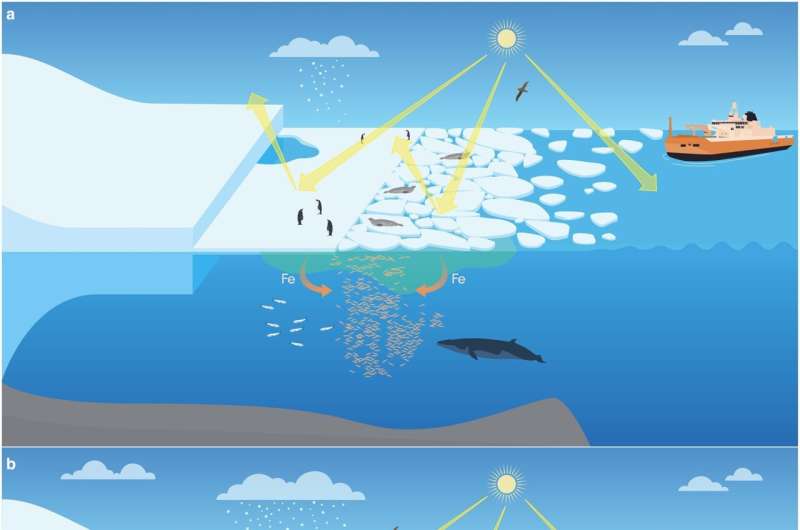Antarctic sea ice is experiencing unprecedented variability, raising alarms about its potential impacts on global ecosystems and climate. A recent study published on July 1, 2025, in PNAS Nexus by Edward Doddridge and colleagues reveals that record-low sea ice years are becoming increasingly common as the planet warms. This phenomenon is not only a concern for the iconic penguins that inhabit the region but also for the broader ecological and climatic systems.
The study highlights that the decline in sea ice has far-reaching effects, including the warming of the Southern Ocean, increased ice-shelf calving, and more intense phytoplankton blooms. These changes have cascading impacts on marine life, particularly affecting krill and silverfish populations, which are vital components of the Antarctic food web.
The Role of Sea Ice in Climate and Ecosystems
Antarctic sea ice plays a critical role in reflecting solar radiation, thus influencing the Earth’s climate. Its high reflectivity helps regulate global temperatures. Moreover, the ice serves as a crucial habitat for various species, both underwater and above. The variability in sea ice cover, marked by alternating record highs and lows, underscores the sensitivity of the Antarctic environment to climate change.
According to the study, low sea-ice years have detrimental effects on krill, small crustaceans that rely on sea ice for feeding and refuge. The decline in krill populations disrupts the food chain, impacting predators such as whales, penguins, and seals. These species depend on stable ice floes for molting, nesting, and growing new fur, and their survival is threatened by prolonged periods of low sea ice.
Implications for Antarctic Science and Human Activity
The reduction in firm, land-affixed ice also poses challenges for human activities in Antarctica, particularly scientific research. The stability of ice platforms is crucial for the operation of research stations and the safety of expeditions. As the study suggests, the decreasing ice cover complicates logistics and increases the risks associated with conducting research in the region.
Doddridge and his team emphasize the need for additional research to fully understand the impacts of low Antarctic sea ice on physical, ecological, and societal systems. They call for reliable, year-round, long-term measurements of sea-ice thickness to better predict and mitigate these effects.
Expert Opinions and Historical Context
Experts in the field underscore the urgency of addressing the declining sea ice. Dr. Jane Smith, a climatologist at the University of Cambridge, notes, “The changes we’re observing in Antarctic sea ice are a clear indicator of the broader impacts of climate change. It’s imperative that we increase our monitoring efforts to better understand these dynamics.”
Historically, the Antarctic region has been a bellwether for climate change. The variability in sea ice cover observed today mirrors past fluctuations, but the current trend towards lower ice levels is unprecedented. This shift has significant implications not only for local ecosystems but also for global climate patterns, as changes in Antarctic ice can influence ocean currents and weather systems worldwide.
Looking Ahead: The Need for Comprehensive Research
The study by Doddridge and colleagues serves as a call to action for the scientific community and policymakers. The authors stress the importance of comprehensive research to develop effective strategies for mitigating the impacts of sea ice decline. This includes enhancing observational capabilities and investing in technologies to monitor ice thickness and distribution accurately.
As the world grapples with the challenges of climate change, the situation in Antarctica highlights the interconnectedness of global systems. The decline in sea ice is not just a regional issue but a global concern that requires coordinated efforts and innovative solutions.
In conclusion, the findings from the PNAS Nexus study underscore the urgent need for action to address the declining Antarctic sea ice. As researchers continue to unravel the complexities of this issue, it is clear that the implications extend far beyond the icy continent, affecting ecosystems and climates around the world.
